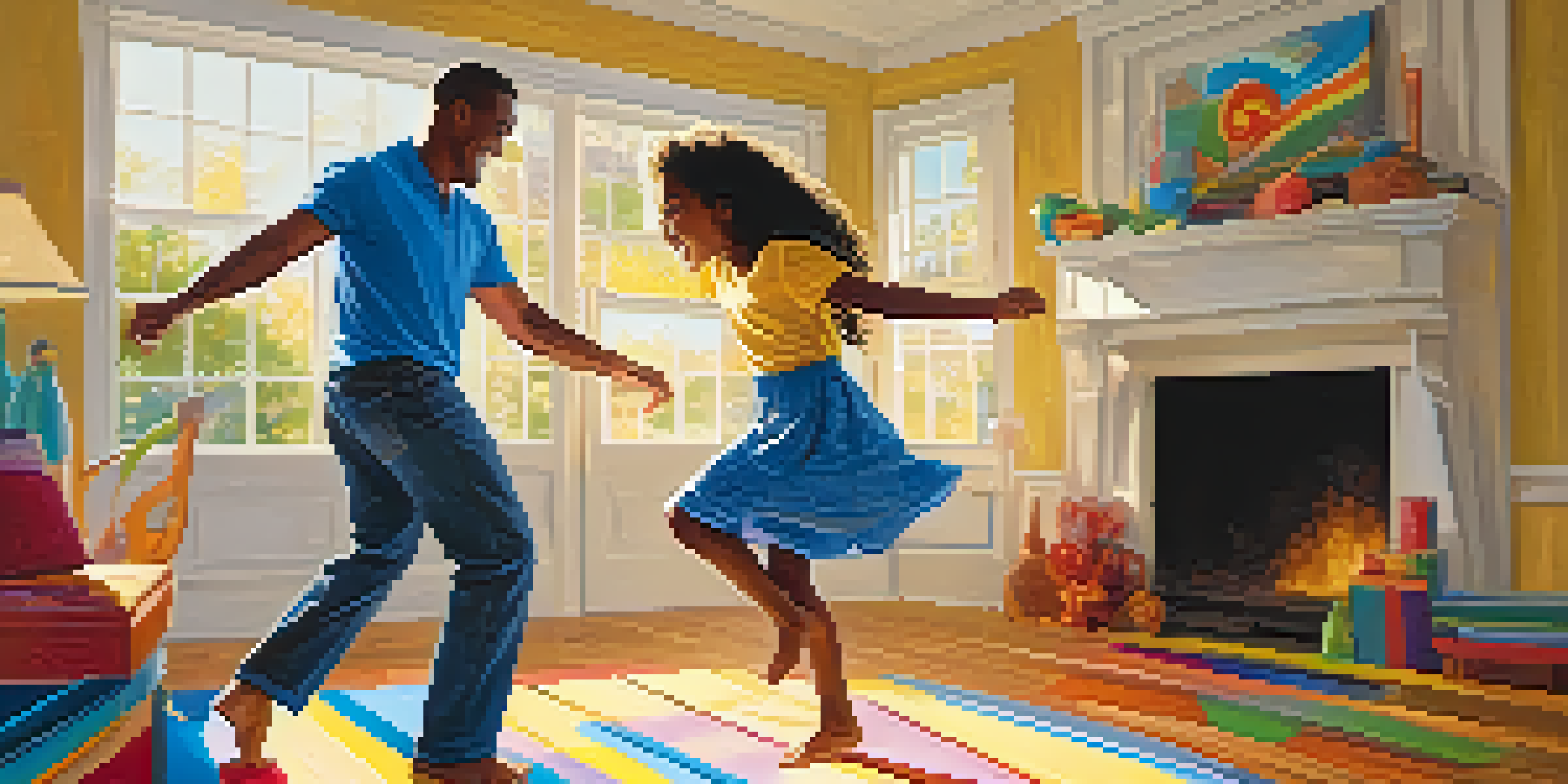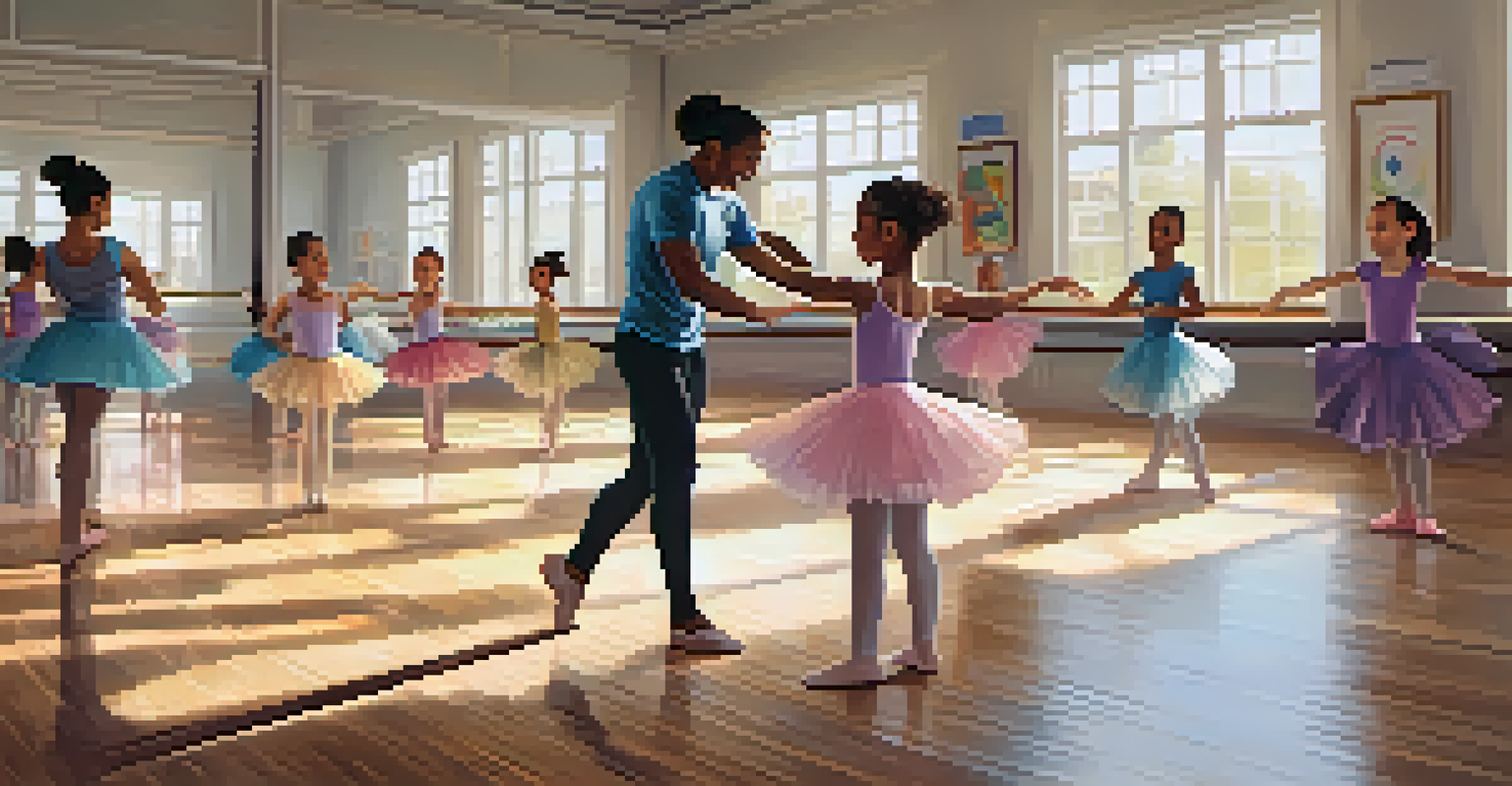Parent-Child Dance: Building Trust and Affection Through Steps

The Joy of Dancing Together: A Shared Experience
Dancing with your child can be a delightful bonding experience. It’s not just about the steps; it’s about sharing joy and laughter in a light-hearted environment. Whether you’re twirling in the living room or learning a new dance move together, each moment spent dancing strengthens your connection.
Dance is the hidden language of the soul.
When you dance, you create a space where both of you can express yourselves freely. This shared activity promotes not only fun but also encourages open communication, allowing your child to feel safe in expressing their feelings. As you move together, you establish a rhythm that mirrors the trust and affection in your relationship.
Additionally, dancing can serve as a powerful tool for emotional regulation. Through music and movement, both you and your child can navigate feelings of happiness, excitement, or even nervousness. This emotional connection is vital in fostering a nurturing environment at home.
Building Trust: The Dance of Connection
Trust is the foundation of any strong relationship, and dancing together can help develop that trust. As you guide your child through various dance steps, they learn to rely on you for direction and support. This mutual reliance reinforces their sense of security and belonging.

Moreover, dancing requires cooperation and understanding, skills that are essential for building trust. When your child sees that you’re there to catch them if they stumble or to celebrate their successes, they feel more secure in your guidance. This fosters a relationship where they feel valued and understood.
Dancing Strengthens Bonds
Engaging in dance together fosters joy, trust, and emotional connection between you and your child.
As you both learn new moves, you also learn to trust each other’s instincts. This shared learning experience nurtures a bond that goes beyond simple steps; it cultivates respect and confidence in one another, essential ingredients for a trusting relationship.
Expressing Affection Through Dance
Dance is a universal language of expression, and it can be a beautiful way to show affection. Simple gestures like a twirl, a lift, or a gentle sway can convey feelings that words sometimes cannot. Your body movements can say, 'I love you' or 'I’m here for you' in ways that resonate deeply.
Dancing is like dreaming with your feet.
When you hold your child close during a slow dance or spin them around joyfully, you’re creating a physical connection that reinforces emotional bonds. These moments of closeness allow your child to feel cherished and valued, which is crucial for their emotional development.
Furthermore, incorporating fun music can enhance these affectionate moments. Singing along or sharing favorite songs during your dance sessions can turn an ordinary day into a memorable experience filled with love and laughter.
Creating Lasting Memories Through Dance
The memories you create while dancing with your child will last a lifetime. These moments become cherished stories that you can reminisce about together, strengthening your bond even further. Over time, these shared experiences become a part of your family’s narrative.
Imagine looking back and recalling the ridiculous dance moves you both tried or the silly faces you made while laughing together. These memories not only bring smiles but also reinforce the idea that home is a safe and loving space for your child.
Dance as Emotional Expression
Movement allows children to express their emotions freely, helping them process feelings more effectively.
Moreover, creating traditions around dance can help solidify these memories. Whether it’s a weekly dance party or a special dance at family gatherings, establishing these rituals adds another layer of connection and joy to your relationship.
Dance as a Tool for Emotional Expression
Dancing provides an outlet for emotions, making it an effective tool for emotional expression. When children find it hard to articulate their feelings, movement can help them release pent-up emotions. A joyful dance can lift their spirits, while a slow, reflective dance can help them process sadness or frustration.
As a parent, you can observe how your child expresses themselves through dance, offering you insights into their emotional state. This awareness allows you to engage with them more thoughtfully and supportively, fostering deeper understanding and connection.
Encouraging your child to dance freely, without judgment or rules, promotes their confidence in expressing their emotions. This freedom can lead to healthier emotional processing and stronger emotional bonds between you.
Learning Life Skills Through Dance
Dancing isn’t just a fun activity; it also teaches valuable life skills. Coordination, balance, and rhythm are just the beginning. As children learn to dance, they develop perseverance through practice and patience, which are essential traits in all areas of life.
Moreover, dance encourages creativity and self-expression. When your child experiments with different moves or styles, they learn to think outside the box and embrace their individuality. This creative exploration can boost their confidence both on and off the dance floor.
Learning Skills Through Dance
Dancing teaches children valuable life skills such as perseverance, creativity, and social interaction.
In addition, dancing together can enhance social skills. When children dance with others, they learn to collaborate, share space, and respect personal boundaries. These skills translate into various aspects of their lives, from friendships to teamwork in school.
Finding the Right Dance Style for Your Family
With so many dance styles out there, finding the right one for your family can be a fun adventure. Whether you prefer the elegance of ballet, the upbeat nature of hip-hop, or the classic feel of ballroom, each style offers unique opportunities for connection and fun. Explore different genres together and see what resonates with your family’s personality.
Trying out various styles can also introduce your child to diverse cultures and histories, enriching their understanding of the world. Each dance form carries its own story, and sharing that journey can enhance your bond and spark curiosity.

Ultimately, the best dance style is one that brings you joy and allows you to connect. Focus less on perfection and more on the experience of moving together, enjoying the music, and creating lasting memories.